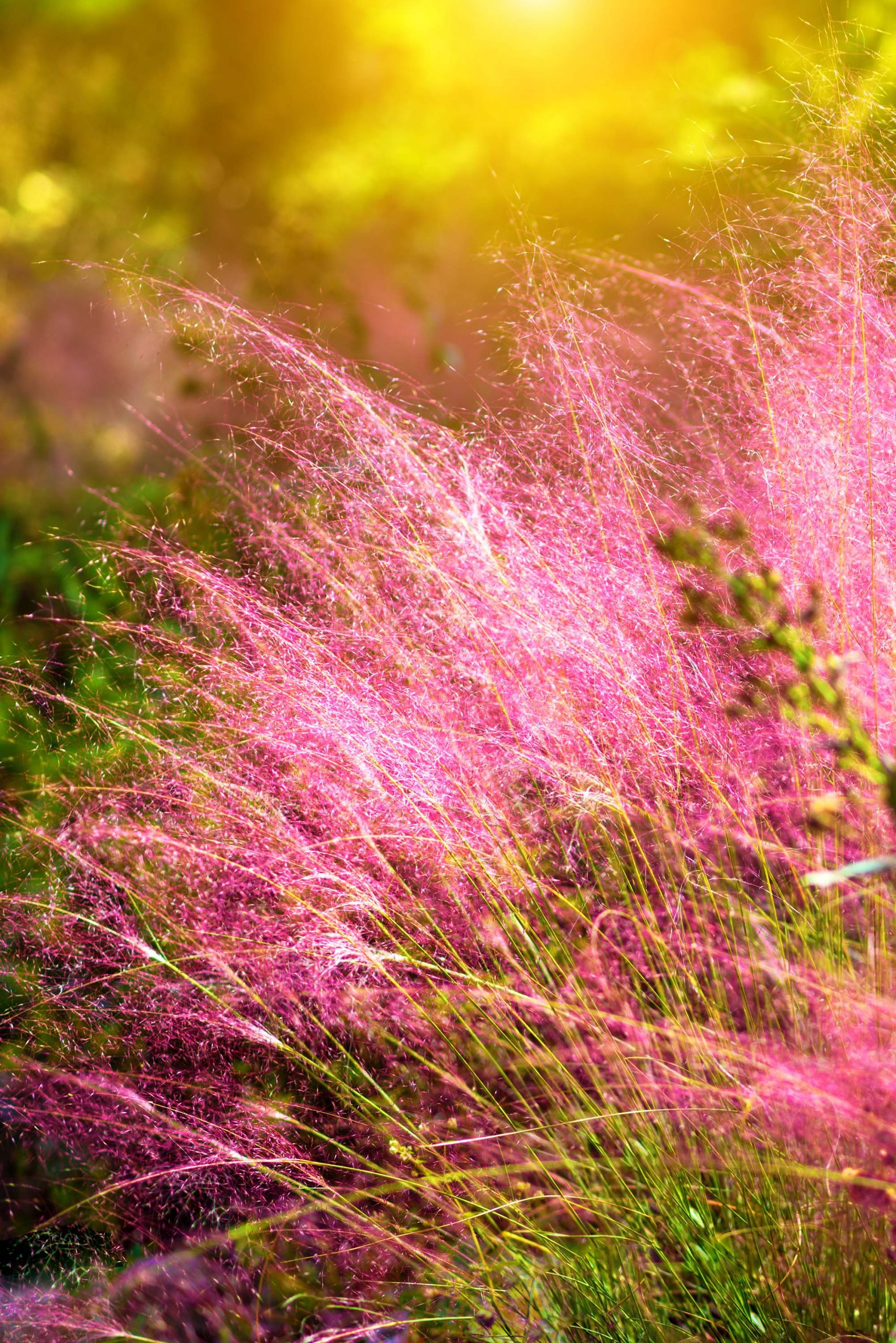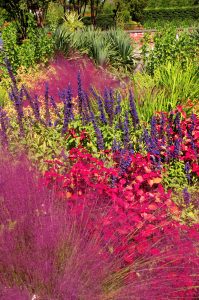- © 2025 Annapolis Home Magazine
- All Rights Reserved

Perennial gardens have their own timing and visual tempo, with some flowers fading just as others come into bloom. Inevitably, there are bare and brown moments, necessary “pauses” in the earth’s score. Many gardeners fill these spots with annuals, yet, as fall approaches, even the most dependable blossoms tire. To help ease such transitions during Maryland’s hot summers, grasses are ideal. Once established, most specimens are easy to grow, need very little water, and even prefer poor soil.

Muhlenbergia capillaris. Delicate pink flowers mature on long, narrow, wiry leaves in the fall. The grass prefers sun to part-sun, is clump-forming, and produces tiny, purplish seeds. Pink Muhly Grass was named after Gotthilf Muhlenberg, a botanist, chemist, and minerologist.
When it comes to design, you can use grasses much like an artist uses paint—especially if you choose hardy pink Muhlenbergia capillaris. This 3’ ornamental fast-growing perennial, especially ‘Plumetastic’, has a stately arching form and, happily, is salt-tolerant and deer-resistant. When planted in masses, the effect is astonishing—the grasses act much like brushstrokes in an impressionist painting. When in bloom, flamingo pink feathering tips fade to deep purple, then dusky mauve and seem to float in the air, emanating a kind of halo. From late summer through fall, they merge to create giant clouds of brilliant color, especially when seen from afar.
When starting your endeavor, think about composition. Become aware of the light patterns in your garden. Watch daily for a while, and in the sunniest spots, “paint” with clusters of muhly. It is in the sun where the muhly will grow best and shine forth. Don’t be mousy, just planting a couple here and there. Plant in masses of at least five to ten, suggests landscape architect Jay Graham.
Note that other plantings in your garden will be affected and will either gain or lose contrast and consistency, depending on their distance from these grasses. To counter the brighter pinks and mauves of the muhly, use off-white grasses. The 6’ to 10’ dramatic well-defined silver plumes of Cortaderia selloana ‘Patagonia’—a hardy pampas grass that grows well in Maryland’s zone 7—are stunning when paired with the muhly’s softer texture. Another paint-worthy grass is Miscanthus sinensis ‘Variegatus’ maiden grass. Its pleasing rounds frame the wild and sweeping muhly; bold green and white striped leaves become luminous when planted nearby.
There is something splendid about grasses—how they rise upright, arch gracefully, round and mound, how they move in the wind. See what fits your vision, your garden’s personality and conditions. Do you need soft feathers or operatic plumes? A border of sassy miniatures or a screen of stately towers? Or some combination of all of the above?
Even as grasses die in the winter to regenerate, they give back. Not only do they provide habitats for small wildlife, they take on unusual forms, especially when tipped with frost or raindrops or merely silhouetted against a January sky. Grasses are continually expressive. In the coldest months, they are the silence we crave. Experiment with the wonderful wild grasses, keeping in mind that the word “plant” is very close to “paint.”
Follow Kymberly Taylor on Facebook and Instagram: @thehighheeledgardener
© Annapolis Home Magazine
Vol. 12, No. 5 2021